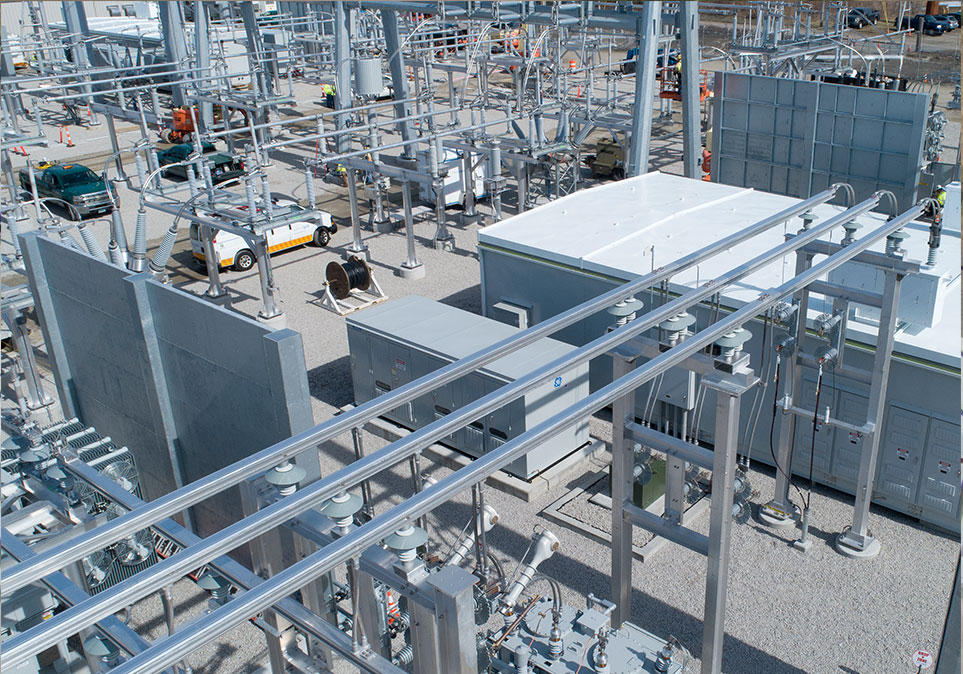The electric grid in the United States serves dozens of homes, businesses, and industries through a sophisticated and vulnerable infrastructure of power plants, transmission, and distribution facilities. Critical infrastructure protection services are essential to the daily lives of American citizens and the economy. The most vulnerable components on power grids are ICS (Industrial Control Systems). In a nutshell, ICS controls electrical operations and physical tasks such as opening and closing circuit breakers.
Moreover, ICS incorporates technological advances that use the Internet for remote monitoring and control to reduce costs, save energy, and increase grid stability. The flip side is that this opens up tremendous opportunities for “hacktivists,” government threat actors, and computer hackers to gain control of OT (operational technology). Effective cybercrime can have a significant impact on people’s lives, from inconveniences such as loss of Internet connectivity, streaming services, television, and cell phone reception to potentially deadly events such as non-operational traffic lights, non-functioning life-saving hospital equipment, failing water pumps, and lack of cooling or heating.
How Serious Are Cyberattacks In The Energy Sector?
Data from the U.S. Department of Homeland Security show that even a brief cyberattack on the power grid can cause significant disruptions to security systems and critical communications channels. The magnitude of threats to critical infrastructure has increased in 2022 due to the rise of digital ransomware crimes, national threat actors, and, of course, the war between Ukraine and Russia. National threat actors, for example, work for hostile nations such as Iran, China, Russia, and North Korea. According to the U.S. intelligence community’s annual threat assessment, they disrupt or endanger the lives of United States citizens. Worse, when it comes to critical facilities, they cause incidents by crippling the energy, nuclear, financial, and technology sectors.
About Cybersecurity and Infrastructure Security Agency(CISA)
The U.S. Government’s recently established Cybersecurity and Infrastructure Security Agency is working tirelessly to address these security risks and create secure and resilient assets. It has since urged all major industry players in the country to remain vigilant in the face of malicious online activity.
Therefore, electrical contractors must meet and exceed the essential criteria for protecting the electrical grid. Compliance with CIP criteria is necessary for all energy industries, from small facilities to large enterprises. Energy companies can address these issues by reviewing and updating CIP practices and processes to physically protect assets from property destruction, terrorist activity, and other security issues or to protect software and hardware investments from incredibly advanced malicious hackers. Failure to do so could be fatal to individual enterprises and the entire BES (Bulk Electric System).
Three Key Areas Of CIP To Protect
While most enterprises have a good handle on their facilities’ physical security, many others need more IT policies to protect their critical software and hardware infrastructure. Suppose they fail to address these vulnerabilities. In this case, protecting their physical infrastructure becomes easy to undermine. In today’s environment, it is critical to address all three aspects of critical infrastructure protection, namely;
- Security of the physical facility
- Hardware security
- Software security
Cybersecurity is among the top ten global threats, with the energy industry most at risk. Neglecting to update software and hardware constantly can lead to serious security breaches. They can damage on-site infrastructure, undermine market confidence, and compromise power security.
CIP Protection Of Plants
If the physical elements of a facility are not in excellent operating condition, the facility is at risk and becomes unusable. Given the long distances involved, adequately protecting and monitoring facilities can take time and effort. However, if it is a critical component of the electrical infrastructure, a breach in protection can impact the entire grid and result in large fines or penalties. It’s worth investing the money in physical security for your facility to reduce the likelihood of physical attacks from terror and vandalism.
Cyber Security CIP
CIP compliance requires strong commitment, persistent initiatives, and an organization’s forward-thinking mentality.
Physical infrastructure and CIP (Hardware)
The core criteria in NERC CIP define specifications that energy companies must meet to build various management systems, highlight key components, implement physical security of systems, and recover resources at risk.
NERC CIP-002-5 – BES Infrastructure Classification
The NERC CIP -002-5 policy aims to improve loss prevention. It ensures you don’t leave vulnerabilities to chance that can render BES unreliable or impact operations. The broad category of the standard for cyber systems are:
- Secure cyber assets
- PACS (Physical Access Control Systems)
- Security Management Policies (NERC CIP-003-8).
- EAC(Electronic Access Control)
It allows utilities to improve accountability and disclosure while protecting BES cyber assets. Utilities must rely on competent management to develop long-term security strategies.
Workforce Training(NERC CIP -004-6)
NERC CIP -004-6 instructs service providers and their staff to help organizations reduce the possibility of cyberattacks on BES systems. The process involves increasing information security knowledge among teams. It also provides an accurate overview of workers’ and employers’ access and risk control protocols.
<h2>Electronic Security Barrier(CIP-005-6 NERC)</h2>
Electronic Security Barrier(CIP-005-6 NERC)
This benchmark strengthens the security of BES cyber resources to prevent potential turbulence and dysfunction. It also emphasizes complete network accessibility management. It also encourages utilities to build their own ESP (Electric Security Perimeter) around their cyber assets to detect linked data streams and connect them to separate electronic access points.
As power grids and utilities dominate our industry and daily lives, they are increasingly vulnerable. Compliance with NERC CIP is the best option for companies to protect their customers, environmental assets, and critical cyber investments associated with the Bulk Electric System.
DuraBarrier USA is built on three pillars: protection, engineering, and security. We have extensive experience applying fire barriers and reinforced firewalls to contain and protect all types of infrastructure, critical assets, people, sites, and properties. Want to learn more about how our solutions can help you? Please visit https://firebarrierexperts.com/ to see our extensive list of solutions that address individual customer needs.
Sinisi Solutions
75 Main St, Manasquan, NJ 08736
732-232-2100




